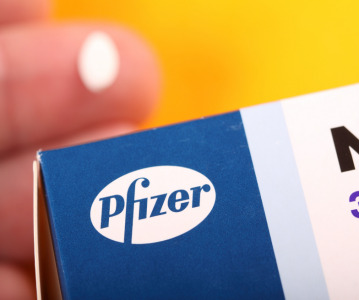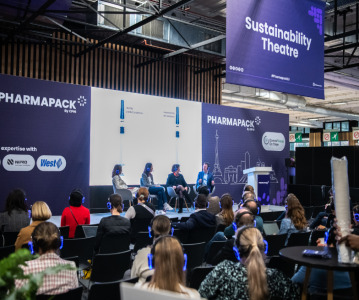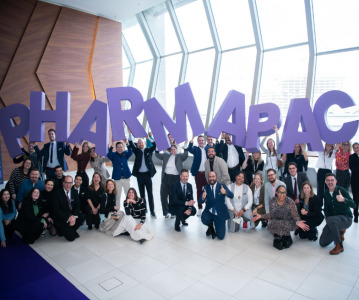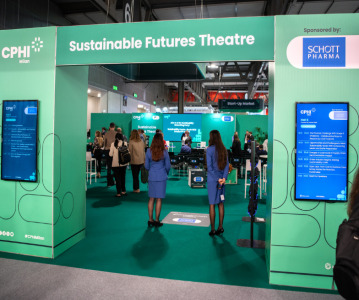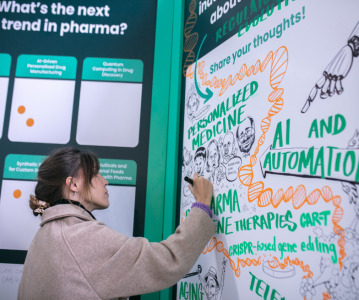On Track at CPHI Milan: The RTU Alliance on the importance of packaging innovation
.png)
As CPHI Milan gets ever closer, we sat down with some of the sponsors for this year’s conference tracks to discuss the most pressing topics in pharma, and the innovations that are set to shake up the industry.
In this interview, the Alliance of RTU founding members – Gerresheimer, SCHOTT Pharma, and Stevanato Group – discuss the recent developments in packaging, what to expect from the conference track, and why it's so important to the pharmaceutical industry.
What are the latest developments in clinical vs commercial packaging?
Given biologics' dominance in the drug pipeline, the primary requirement for packaging is to ensure stability and integrity. RTU packaging has become a preferred solution, as it minimises handling, reduces contamination risks, and supports biologics' stringent quality requirements.
Recent developments in clinical packaging show the need for customisation, small-batch production, and fast delivery. The smaller, more customised production batches in the clinical phase address limited demand and patient-specific requirements, where speed is critical to ensure timely treatment delivery.
Primary packaging providers are supporting the pharma partners, offering clinical trial kits with pre-sterilised containers and various components. On the other hand, commercial packaging trends favour scalable solutions like Ready-to-Use (RTU), which offer high-quality standards and greater flexibility in filling operations. Early adopters have successfully scaled RTU packaging from clinical to commercial production, accelerating the transition and reducing time to market.
What innovations in packaging have been developed to increase the recyclability and sustainability of products?
Recent innovations in packaging focus on enhancing both recyclability and sustainability, driven by advancements in materials and processes.
One significant development comes from Ready-to-Use (RTU) industrial setup. Increasing automation, it reduces potential contamination from glass-to-glass or glass-to-metal contact and improves sustainability by reducing breakage and increasing line efficiency, leading to less glass waste during production. Another element supporting sustainability is the implementation of alternative sterilisation methods to traditional methods like ethylene oxide (EtO), reducing environmental impact, e.g. steam sterilisation or sterilisation with low-temperature vaporised hydrogen peroxide (LT-VHP).
In terms of materials, there's a shift towards better recyclable as well as bio-based polymers, which offer a more sustainable alternative to traditional plastics. Additionally, increasing the density of containers per package improves efficiency in shipping and storage, further minimising waste.
Overall, these innovations are helping to create more sustainable packaging systems that reduce waste, improve recyclability, and decrease pharmaceutical products' environmental footprint.
What is the most unmissable session from the track?
Attending the keynote speeches and the panel discussion in the 'Alliance for RTU' session is a great opportunity to gain insights from key industry players in the pharmaceutical and CMO (Contract Manufacturing Organisation) sector. You can expect to learn about the effective utilisation of ready-to-use vials and cartridges in aseptic manufacturing processes and gain a comprehensive understanding of how leveraging these solutions can lead to benefits such as increased flexibility and reduced quality risks through strategic process design while ensuring compliance with Annex 1 requirements.
Why is this track’s subject so important to the pharmaceutical industry?
The increasing demand for injectable medicines and the regulatory pressure to meet safety standards are driving investments in advanced aseptic filling technologies. The utilisation of primary packaging, such as ready-to-use (RTU) platforms and innovative drug delivery systems, are pivotal elements in the pharmaceutical value chain. These components play a critical role in enhancing efficiency and safety simultaneously. Primary packaging acts as a bridge from production to the end user, ensuring safe storage and facilitating patient-centric, safe administration of medications. This underscores the importance of focusing on these aspects within the pharmaceutical industry to meet the evolving market needs and regulatory requirements.
What do the companies need to consider when adopting RTU technology for large-scale production?
RTU technology is already well established on the market. When adopting it for large-scale production, companies can unlock significant efficiencies, but success hinges on focusing on three critical factors:
a. Regulatory Compliance and Sterility Assurance: RTU packaging must meet rigorous standards, like USP, EP and EU GMP Annex 1, to guarantee sterility and container closure integrity. By ensuring robust validation and seamless regulatory approval, companies can mitigate contamination risks and maintain the highest quality, ensuring patient safety.
b. Manufacturing Integration and Scalability: RTU systems streamline production by eliminating in-house sterilisation. Companies must assess equipment compatibility and ensure their processes can scale efficiently to meet growing demand—reducing downtime and maximising productivity.
c. Cost Efficiency and Supply Chain Resilience: RTU technology is proven to reduce operational complexity and risks. The long-term efficiency improvements that are gained through ready-to-use technology outweigh the initial upfront investment.
Managing supply chain consistency and reducing lead times are also key to sustaining cost-effective, high-volume production without compromising on quality or reliability.
The full potential of RTU technology can be harnessed, when considering these key areas, to drive operational excellence while safeguarding quality and compliance.
Do you believe that the industry is ready to make this change?
RTU technology is not new; it has already proven its value in streamlining production by eliminating the need for in-house sterilisation. Many companies have successfully used RTU systems for small-batch and specialty drugs, demonstrating their reliability and effectiveness.
Secondly, regulatory agencies like the FDA and EMA are well-acquainted with RTU systems and have established clear guidelines for their use.
This regulatory clarity makes it easier for companies to integrate RTU technology without facing major approval hurdles.
Finally, there’s a growing demand in the industry for greater efficiency, faster production times, and enhanced product quality. RTU technology meets these needs by simplifying the filling process, reducing contamination risks, and improving overall sterility assurance.
The technology is proven, regulatory pathways are clear, and the industry's needs align well with what RTU offers. These factors assert that the industry is indeed already embracing this transition.
CPHI Milan takes place October 8-10 at the historic Fiera Milan and there's still time to register! Click here to find out more. Don't miss the Packaging Innovation track in Hall 20.
Related News
-
News Pfizer may shift production back to US under Trump pharma tariffs
At the 45th TD Cowen annual healthcare conference in Boston, USA, Pfizer CEO Albert Bourla outlined the potential for Pfizer to shift its overseas drug manufacturing back to the US as pharmaceutical industry players weigh their options against Presiden... -
News Women in Pharma: Connecting accessible pharma packaging to patients – a Pharmapack Special
Throughout our Women in Pharma series, we aim to highlight how CPHI events encourage discussions around diversity, equity, and inclusion initiatives in the pharmaceutical industry. -
News CPHI Podcast Series: Packaging expert perspectives at Pharmapack 2025
This month's podcast episode sounds a little different, covering the latest event in Paris – Pharmapack 2025. Digital Editor Lucy Chard speaks to several experts direct from the floor of the show, bringing you right in on the action.&nbs... -
News Closing 2024 with Editors' picks of top articles from the past year
Coming to the end of 2024 and it’s certainly been a busy year, for CPHI and for the rest of the pharmaceutical and healthcare industry. Topics of conversation throughout the last 12 months have been varied, touching on the technical, to the polit... -
News SCHOTT Pharma’s sustainable journey with CPHI
Sustainability is of paramount importance in the pharmaceutical industry. See how a recent partnership between CPHI and SCHOTT Pharma has helped to highlight and accelerate their sustainability journey to reach global goals. -
News CPHI Podcast Series: Investing in a vision for the future of life sciences
In this episode Lucy Chard is joined by Rajiv Khatau to discuss the importance of looking into new therapeutic areas and some of the more niche areas of pharmaceuticals, and investing in the future of the industry. -
News Lessons from CPHI Milan 2024: Sunny Intervals for Pharma Manufacturing?
As the 2024 CPHI conference wrapped up in Milan, we caught up with L.E.K. Consulting – a global strategy consulting firm with deep expertise in pharma manufacturing – to discuss evolving market perspectives and business outlook. -
News Women in Pharma: Reflections from Behind the Scenes
In this instalment of our monthly series, the team that brings you the Women in Pharma series each month sits down for a heart-to-heart on what the series means to them, and how they hope to continue their work in the future.
Recently Visited
Position your company at the heart of the global Pharma industry with a CPHI Online membership
-
Your products and solutions visible to thousands of visitors within the largest Pharma marketplace
-
Generate high-quality, engaged leads for your business, all year round
-
Promote your business as the industry’s thought-leader by hosting your reports, brochures and videos within your profile
-
Your company’s profile boosted at all participating CPHI events
-
An easy-to-use platform with a detailed dashboard showing your leads and performance
